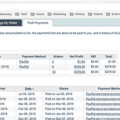Fed warns of economic ruin from burgeoning U.S. debt
The U.S. government’s debt, which broke $22 trillion for the first time this year, is on an “unsustainable path,” according to a report from the Federal Reserve Bank of St. Louis.
Debt in itself isn’t a problem unless income is lagging, the paper said, and for governments, that typically means money raised by taxes. The U.S. is now is in its 19th year of deficit spending. Income hasn’t exceeded spending since 2001, the year President George W. Bush took over from President Bill Clinton.
“The U.S government debt is currently on an unsustainable path: The federal debt is projected to grow at a faster rate than GDP for the foreseeable future,” wrote Scott Wolla, of the St. Louis Fed, and Kaitlyn Frerking, a student at the University of Missouri. “Trends that are unsustainable will not continue because the economy will adjust, sometimes in abrupt and jarring ways.”
A solution some countries with high levels of unsustainable debt have tried is printing money, the report recounts. That doesn’t mean they fire up the printing presses.
Instead, the government borrows money by issuing bonds and then orders its central bank to buy those bonds by creating, or “printing,” money that doesn’t actually result in printed bills going into circulation. This type of policy leads to high rates of inflation, the report said.
“If a government prints money to solve its debt problem, history warns that hyperinflation and financial ruin will likely result,” the report said. “While debt in itself is not a bad thing, it can become dangerous if it becomes unsustainable.”
Any widespread instability in the U.S. economy could lead to a downturn in the housing market, with so much of the housing finance system predicated on a steady flow of funds from banks, the government, private investors, and more.
If there’s an interruption in that system, that could impact the availability of credit for mortgage borrowers, those borrowers’ employment, and the general cost of goods. Add all that up and it’s not a stretch to see a negative impact on the housing market from uncontrollable debt.
About 40% of the U.S. debt is held by foreign governments, according to Fed data. China and Japan each hold about $1.1 trillion of U.S. debt, followed by the United Kingdom, with $323.1 billion, Brazil, at $305.7 billion, Ireland at $270.7 billion, Switzerland at $231.4 billion, and Luxembourg at $229.6 billion.
Hong Kong holds $204 billion in U.S. debt, and while the Fed accounts for it separately, it’s a region of China. That means China controls a total of $1.3 trillion of U.S. debt, putting the U.S. at a disadvantage with one of its chief foes on the international stage.
Negotiators are currently trying to come to a “Phase 1” agreement that would amount to a truce in the U.S.-China trade war.
“Although governments may endure indefinitely, that does not mean they can accumulate unlimited debt,” the report said. “Just as individuals can sustain higher debt as their incomes increase, economies can sustain higher debt when the economy grows over time. However, if debt grows at a faster rate than income, eventually the debt might become unsustainable.”
The post Fed warns of economic ruin from burgeoning U.S. debt appeared first on HousingWire.






